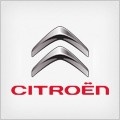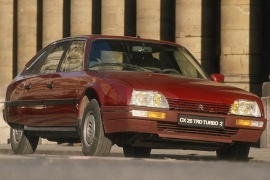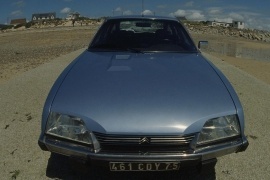
CITROEN CX
Generations Timeline, Specs and Pictures

The French carmaker introduced a heavily revised CX in 1985, continuing the legacy left by the famous DS model.
Even by those times standards, the CX was an old car in 1985. It was already eleven-year-old but still didn’t show its age. It was like a song that refused to go away from the charts. And when the customers started to lose their interest, a DJ came and made a new version for it. That was the 1985 CX.
Starting with the beginning of the ’80s, the chromed metallic bumpers began to fade away from the automotive trend. Citroen already knew that and introduced the wrapped-around plastic bumpers on several models, and starting with 1985, it added it on the CX. All of a sudden, the car looked fresh again, like a pop-singer after successful plastic surgery. Its grille was body-colored, not black as before. Depending on the trim level, the car sported black or chromed door handles.
Inside, the carmaker installed a one-spoke steering wheel with a speed-dependable effort. The instrument cluster lost its unique design with barrels and received a more traditional design with regular dials. For the turbocharged version, the carmaker added a turbo-gauge at the bottom of the tachometer.
Citroen offered an improved engine lineup, including a new, improved turbo-diesel. Starting with the 1985 model, the CX featured only five-speed manual transmissions.

The last vehicle designed entirely by Citroen before the Peugeot takeover, the Citroen CX was marketed in Europe between 1974 and 1991.
Even from the beginning of its production the Citroen CX was appreciated, winning the European Car of the Year trophy in 1975.
The Citroen CX succeeded the legendary Citroen DS from which it borrowed its hydropneumatic suspensions. The engine was mounted transversely and tilted forward, a first in the market segment. With the new position of the engine, Citroen had to develop a new transverse gearbox which was later mounted on the Lancia Beta, Talbot Solara and others.
Even if it was shorter by 21 cm (8.26 inch) than the Citroen DS, the CX offered more interior room due to the new configuration.
The CX did not benefit from the hydraulic control of the gearbox that allowed manual gear change without a clutch pedal as the Citroen DX did.
Quite uncommon for the time, the Citroen CX featured standard 4-disc brakes, with vented discs at the front with the sedan and also at the rear with the wagon.
The exterior styling was the work of Robert Opron, inspired by the GS’ and the SM’s designs. Robert Opron succeeded to develop the new styling without making the CX look like a clone of another model.
In July 1982, the Citroen CX was slightly restyled and featured new names: CX 20, 20 TRE and 25 D. The exterior featured a restyled front mask, a flush grille and enlarged front bumper brackets. Inside, the cabin was fitted with new counter dials with orange numbers on a black background.
Also in 1982, some options became standard such as power steering, electric front windows and central door locking.

Citroen was in a bad financial situation at the beginning of the ’70s, and despite having successful products, its accounting was in the red zone.
With only a few models in its lineup and significant debts, Citroen went bankrupt in 1974. Michelin, the tire manufacturer, owned one-third of the carmaker’s stakes and sold them to Peugeot, who stepped in to save the struggling brand. But other parts of the business made them go bankrupt, not the car business. The new model, which received the CX name, was the living proof for that.
It was long, sleek, and very aerodynamic for a sedan. While other cars from those times looked like boxes on wheels, the CX looked like a spacecraft. Its raked and curved windshield featured one wiper. The designer Robert Opron studied the vehicle’s shape in the wind tunnel, while most other coachbuilders just tried to stick an engine, a cabin, and a trunk between the front and rear bumpers. Even the door handles were modern, not to mention the rectangular headlights with a narrower inner side.
Inside, the revolutionary design continued with a one-spoke steering wheel. Citroen engineers considered that the driver had to decide when to start and stop the turn signals and mounted their switch on the left side of the instrument cluster, not on a stalk from the steering column. Another improvement was for the instrument cluster, where Citroen wrote the values on a cylinder and placed a lens in front of it.
CX had one weak spot: the engine. Due to the French tax rules, it was forced to install low-powered and small displacement engines. Not even the most powerful version, which provided 128 hp, was able to crack the 120 mph (193 kph) barrier. But the car provided the most comfortable ride on the market thanks to its unique hydropneumatic self-leveling suspension system.























































